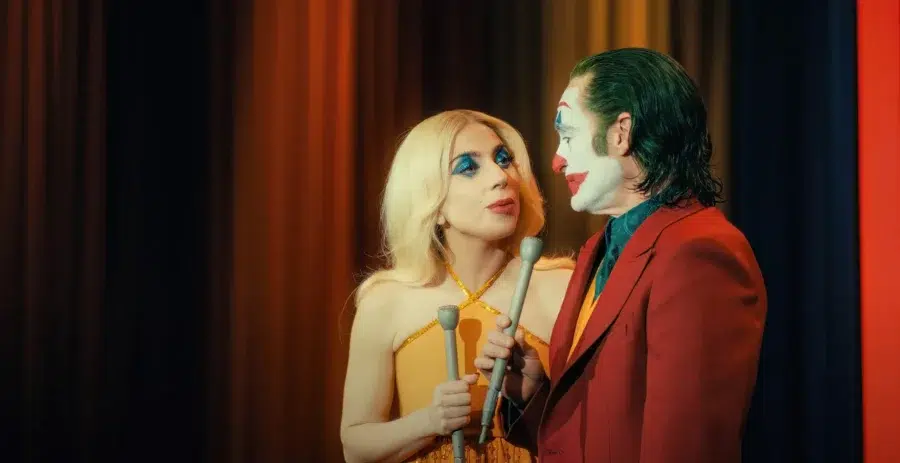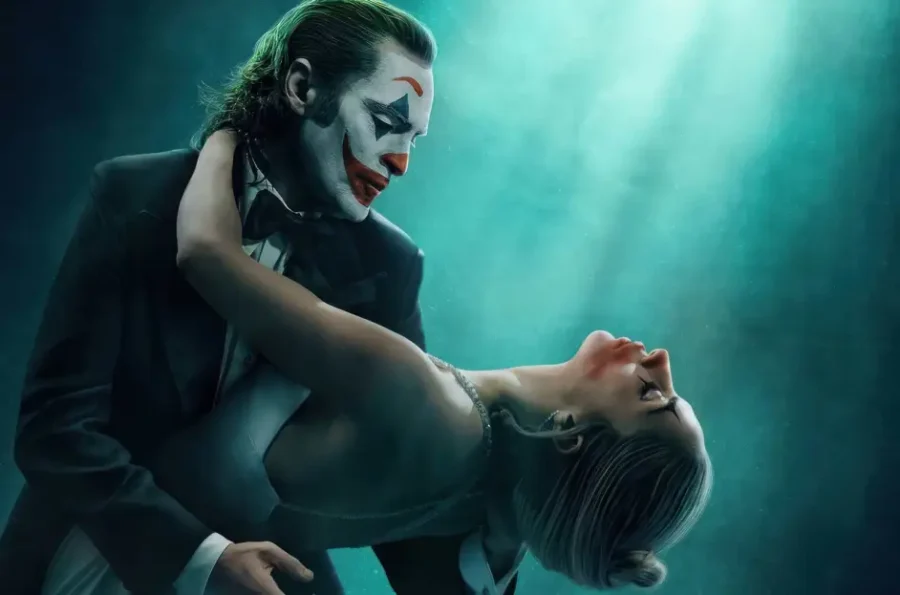Review of Joker: Folie à Deux
Since being printed on the pages of the first Batman issue in April 1940, The Joker has earned a reputation of being one of the most complex comic book villains ever conceived.
A devilish depiction of a crazed clown hellbent on spreading chaos throughout the infamous Gotham City, the character serves as the antithesis to the Batman’s adamant instillation of justice throughout the city.
With a villain so unhinged and committed to anarchy, it’s only natural for audiences to wonder how this desire for destruction occurred. Many attempts have been made, both textual and cinematic, to dissect the true origins of the Joker’s cryptic insanity.
Some adaptations have garnered more adoration than others. Most notably, the late Heath Ledger is viewed by many fans, superhero or otherwise, as the most impactful iteration of the Joker. The actor even secured a Best Supporting Actor Oscar win in 2009 for his performance in The Dark Knight.
Although other actors tried to embody the iconic character, no one seemed to surpass Ledger’s bold take. Until 2019 when The Hangover series director Todd Phillips delivered a film with myriad polarizations, including a new contender for the “best” Joker.
The 2019 Joker film starring Joaquin Phoenix in the titular role, aroused anything but cultural consensus with some saying the film was a modern masterpiece and audacious stance on the character’s personality. Others feared the film’s critiques of capitalism, class, and mental illness would incite violence in audience members.
Some theaters even opted to have police present at their screenings and two showings in Huntington Beach in California were canceled due to a “credible threat,” according to USA Today.
The Century Aurora and XD Theater in Aurora Colorado, where a mass shooting occurred at a showing of The Dark Knight Rises in 2012, refused to feature the film altogether.
The anticipated outcry resulting from Joker’s provocative content was proven to be a massive overestimation. The film instead invigorated another kind of unification, not hailing from disenfranchised lower class and mentally afflicted audiences, but from hubs of film bros across the internet.
The film bro is a somewhat satirical concept but derives itself from a very potent illusory hierarchy within the film community. The film bro essentially acts as anyone, usually a man, who aligns himself with films also usually created by men, that distinctly differentiate themselves from some form of archetypal cinema.
The film bro is notoriously against big-budget blockbuster superhero films unless they make a statement that counteracts those film’s purpose. Many films within the Batman canon, particularly Christopher Nolan’s trilogy fall within this exception.
Joker being the disturbing, gritty film it is, perfectly fits into this category of film bro appeasing films. Many viewers have high praise for the evocative piece, but none of it compares to the regal status it holds within the film bro sphere.
Thus we arrive at Joker: Folie à Deux. The conversation stirring sequel to the previous film. Joaquin Phoenix reprises his role as Arthur Fleck and by extension The Joker, while pop star Lady Gaga joins him to play the clown prince’s doting lover Harley Quinn.
The film was also announced that it would be a jukebox musical, borrowing other successful songs with the addition of some original music. It was reported by Variety that Folie à Deux was one of the most anticipated films of the year along with Dune: Part 2.
Despite a $200 million budget and a promising trailer, the film failed to reach its opening weekend mark at the box office and is now one of the lowest-rated comic book movies with a “D” on CinemaScore and a current 33% critical score on Rotten Tomatoes.
 Credit: Joker: Folie à Deux, Warner Bros. Pictures
Credit: Joker: Folie à Deux, Warner Bros. Pictures
So what catalyzed the film’s flop? Is it really as bad as everyone says it is? No. It’s not. While the film suffers from tonal inconsistencies, lacking character arcs, and redundant uses of its musicality, Folie à Deux’s biggest problem is the audience members who can’t stomach that their dark exploration of human turmoil has transformed into a fantastical musical.
Folie à Deux exists in a jarring balance of wanting to differentiate itself from its predecessor while still reminding viewers of the first film’s success. The use of classic musical theater songs and 50s love songs are key illustrations of Arthur’s delusions but the film heavily relies on the first film’s original score and even repurposes Frank Sinatra’s “That’s Life.”
There are moments in Folie à Deux that are grim, particularly the treatment of Arthur and the inmates of Arkham but nothing that reaches the gut-wrenching magnitude of the first film.
The two films do work in conjunction if interpreted through the lens of perspective. If the first Joker is an unrelenting depiction of how the world sees the mentally ill, then Folie à Deux is similarly a committed portrayal of how our mentally ill subject, Arthur, sees the world.
The elaborate numbers featuring Phoenix and Gaga submerge you in Arthur’s subconscious, dichotomous in structure as the songs indulge in wild fantasies but retain an underlying sadness. The love that Arthur feels for Harley (Lee as she’s referred to in the film) is only reciprocated when his Joker persona is in control, culminating in more feelings of abandonment and isolation for our deviant protagonist.
Though Lee, in part due to Gaga’s performance is fascinating every time she’s on screen, there is confusion in her motive as the film unfolds. Arthur’s characterization being fleshed out in the first film compliments his actions in this film relatively well but by the time the last number with Lee arrives, audiences may feel the time spent with her was cut short.
Another one of the film’s lower points even though it sets the scene for some of the most compelling musical numbers, is its misunderstanding of the courtroom drama. A large majority of the film centers around Arthur Fleck’s trial after the events of Joker. Besides a couple of introductions that will ignite the attention of Batman fans and occasionally humorous back and forth, the trial scenes quickly grow dull and uninteresting.
Once again, the singing doesn’t set the film back like many think. It instead adds to the delusional whimsy of the story as we get wrapped back up with Arthur in the allure and protection of The Joker only for it to wither away as reality sets in.
The critiques of Folie à Deux’s overreliance on an ineffective courtroom environment and even the use of songs in places that don’t feel quite as fitting are striking centerpieces for conversation. However, simply dismissing the film for its induction of a new approach to the story cultivates a resentment that doesn’t feel justified.
The general reviews and ratings of the film prove the power of the unsatisfied film bro, and just how quickly regular movie-goers are quick to sit complacently in the stream of consensus instead of sparking a genuinely thought-provoking discourse.
Film is meant to be enjoyed, dissected, critiqued, and appreciated. At the end of the day, diverging opinions are formulated by myriad factors. It’s equally important to recognize where these thoughts can be traced back to and if it’s beneficial to break away from the overstimulating noise generated by those who claim they’ve solved the mystical equation of cinema.

